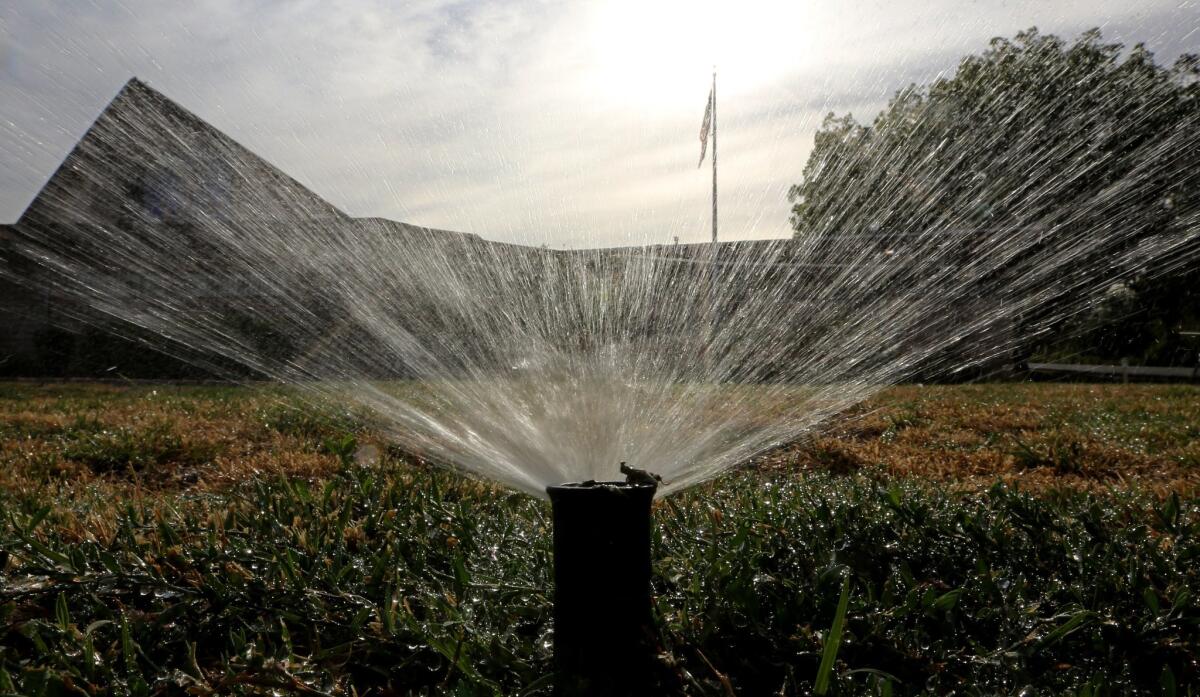Drought fee takes effect for Glendale water users

Sprinklers water a lawn in Sacramento.
Glendale residents are seeing a new drought charge when they open their water bills, a fee aimed at recouping money needed to maintain the utility as people continue to conserve.
Last year, the City Council enacted the second phase of a water-saving strategy in the face of one of the state’s worst droughts.
Phase two required residents to cut back on watering lawns to three times a week, but the drought charge was postponed.
Local residents have been doing their part in cutting back on usage, said Glendale Water & Power General Manager Steve Zurn. Water use is down 26% from the same time last year, but that doesn’t lower the cost of delivering it, he said.
“The rate was based on balancing our revenue requirements in relation to our fixed-cost needs including capital, ongoing maintenance, storage, pumping and water quality, all of which do not diminish regardless of the amount of water is used,” Zurn said. “We needed to ensure that those requirements were always met.”
Utility customers are now being charged an extra 75 cents per hundred cubic feet or about 748 gallons. The typical single-family customer uses about 19 hundred cubic feet of water per month, so they would be paying $14.25, for example.
Zurn said that extra charge would be canceled out for the most part by the money being saved by using less water.
He said the council was progressive in enacting the drought charge, and that Glendale was one of the first cities to do so. Water and power departments in neighboring Burbank and Los Angeles don’t have drought fees.
Peter Fuad, president of the Northwest Glendale Homeowners Assn., said he’s cut back on watering his lawn, as have his neighbors.
“No one likes to pay more … and we’re getting charged for our good work, but I can see the need to maintain infrastructure,” he said.
In the six months before the drought charge went into effect this past March, the utility lost about $1 million due to people conserving water, Zurn said.
The phase-two drought charge will generate between $2.5 million and $3 million if it stays in effect for a year, he added.
By October, Zurn said he plans to return to the City Council with an analysis on whether the city should raise the drought charge to the assessment that’s part of the third phase of the water-saving strategy, which is $1.30 per hundred cubic feet.
The city is currently in phase three of mandatory conservation, cutting lawn watering to twice a week.
But Zurn said it’s too early to say if that fee hike will happen.
“The drought rate is directly tied to mandatory water conservation mandates by the [city council],” he said. “As a result, the rates are only in effect as long as those mandatory measures are in place. Once lifted, the [drought fee] is also lifted.”
